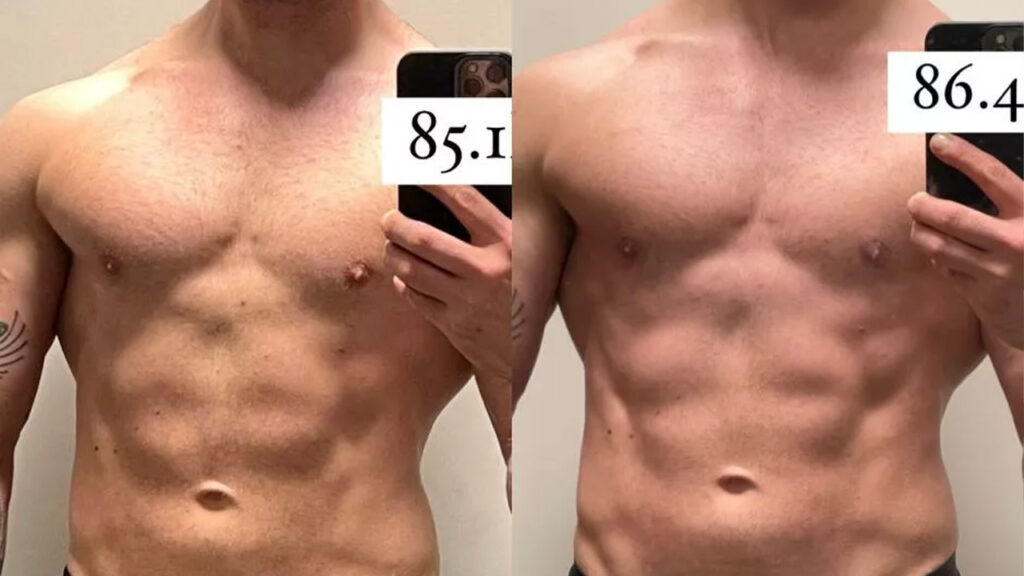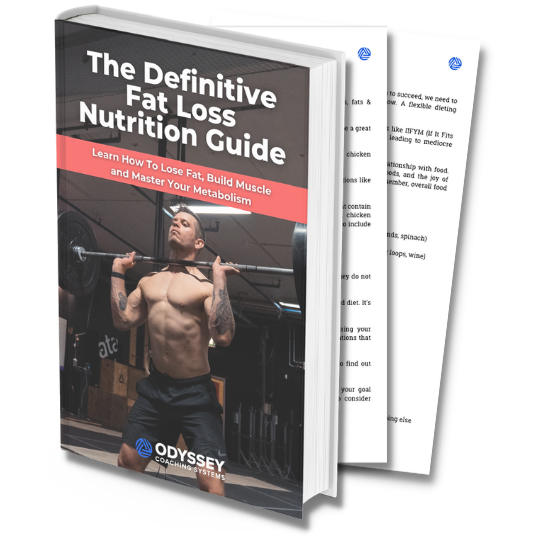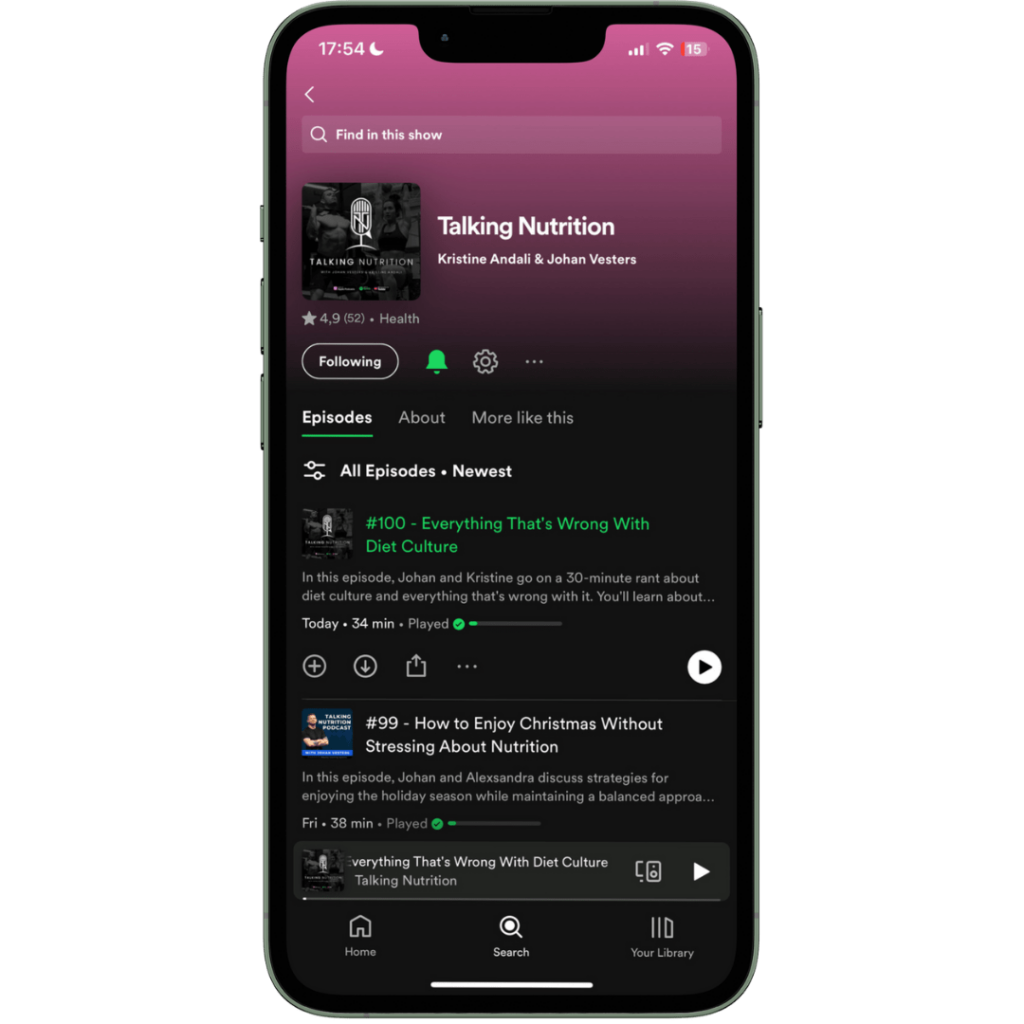Main Take-Aways
1. Not everyone needs a reverse diet. But what I can tell you is that those among our clients who get the best results, are also the ones who dedicate as much time, patience, and effort to the ‘keeping-it-off’ part as the actual diet.
2. Over the course of three months I increased my food intake by 600 calories. My weight went up a little, but you’ll see in the reverse dieting before and after photos below that I actually look leaner in the heavier, more recent photo compared to the end of the cut.
3. Reverse dieting more of an art than an actual science.
In this blog you get to check out my personal reverse dieting before and after photos, along with macronutrient adjustments, roadblocks that came up, and more.
Where most people fail is during the weeks/months right after their diet.
You think “I’ve lost the weight, I’m done now”, which makes sense because the diet/plan you were on didn’t set you up with an exit strategy. Not your fault, though it is your problem. Because whether you have an exit strategy in place or not is the difference between keeping the weight off and regaining it all (often with interest).
Were you supposed to ‘go back to normal’, or keep eating clean in tiny portions? No one showed you what happens after the diet.
Until now..
What is reverse dieting?
Reverse dieting has gotten a lot of attention in the last few years. But what is it? Do you need to reverse-diet? And when?
Think about what happens to your daily food intake when you diet: overtime it goes down, (hopefully) bit by bit. Now reverse that process, and you have what’s called a ‘reverse diet’.
It’s a method that allows you to increase your calories in a controlled way. It can be used to find your true maintenance calories before a diet, something we believe is a crucial first step in your transformation.
A reverse diet can also be a great way to go back to your maintenance calories after a diet. Remember that this will be lower compared to when you began the diet. Mostly because of the weight you lost along the way, and partly because of metabolic adaptations that naturally happen.
Now, not everyone needs a reverse diet. It is possible to jump back to maintenance instantly.
However, based on personal experience as well as that with many of our online clients, it seems that reverse dieting is one of THE best methods to transition out of a diet into either maintenance or a surplus.
Not because a reverse diet is special per se, but because it keeps you in check when your willpower and energy are at their lowest, and hunger is high: at the very end of your diet.
⇒ Click here to learn more about how to stay full in a calorie deficit
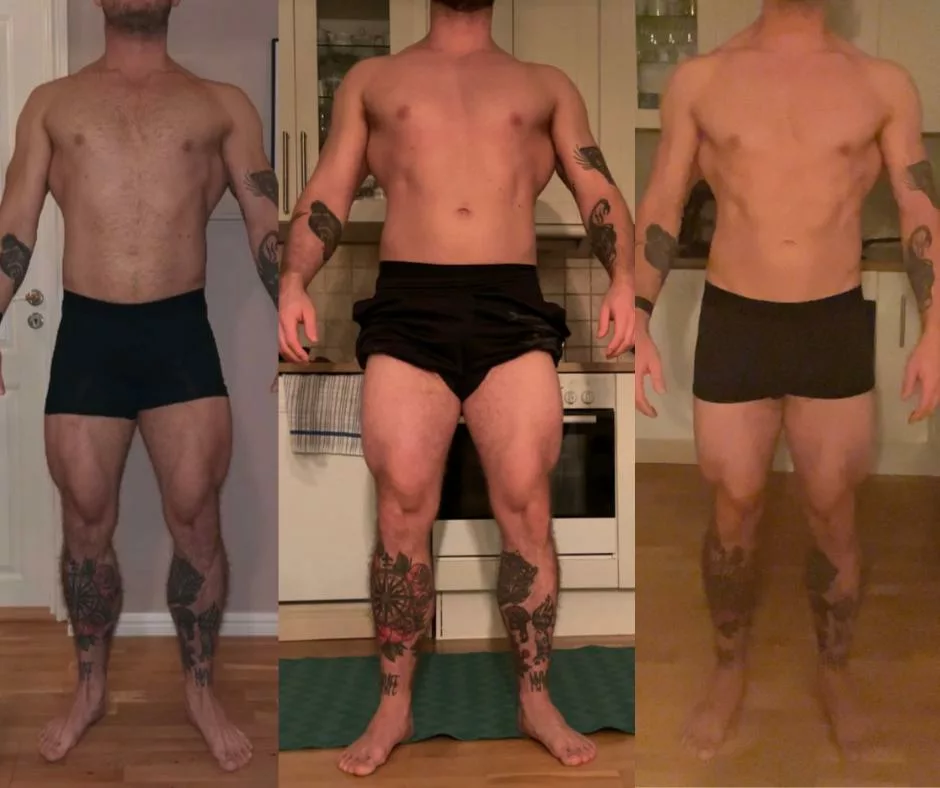
Before the reverse diet
To give you a bit of context here’s a quick breakdown of my personal journey and goals over the past few years.
- I dedicated 14 months – all of ‘21, into early ‘22 – to building muscle, which really deserves its own blog post (note to self). During that period I spent most time in a caloric surplus, about a month at maintenance, and about 8 weeks in a deficit (mini-cut).
- The rest of ‘22 was all about losing the body fat I had accumulated during my long bulk, which is just part of the deal (something that isn’t mentioned enough). I cut for a few months, then maintained most of summer, and did my final cut which lasted until October 30th.
- Next up in my periodization plan: reverse diet to reestablish maintenance, then continue to add food to ease into a slow, lean gaining phase. After that: a mini-cut before summer, then maintenance, and a bulk in Q4.
Alright let’s get into the nuts and bolts of my reverse diet, shall we?
⇒ Important note: We all differ when it comes to our body composition, activity level, metabolism, diet history, and more. That being said, the following macros will most likely not apply to you. I’ll provide you with the most complete data possible, however this does not mean much in terms of what your reverse diet may look like.
⇒ If you want to get an estimate of your own maintenance or weight loss calories and macros, then feel free to use our online calculators to get a starting point.
Reverse Dieting Macros
Monday, October 24-30 (last week of my cut)
Average weight: 85.3kg
Calories: 2170 kcal
Protein: 220g
Carbs: 210g
Fats: 50g
My coach and I both agreed on going with a slow approach because 1. my biofeedback was still in an ok place and 2. the goal was to stay as lean as possible. I will say that over the last few weeks of the cut, my step count dropped to about 6.000 steps. So one of the requisites was increasing my steps as we increased calories.
Monday, October 31st – Sunday, November 6th (initial reverse dieting macro adjustment)
Average weight: 85.3kg
Calories: 2270 kcal
Protein: 220g
Carbs: 235g
Fats: 50g
Adjustment: +25g carbs, which comes down to about 100 kcal.
Over the course of November and December my steps we kept adding 10g of carbs per week, every single week. My steps went from 6.000 steps up to about 7.000-8.000 on average. Protein, fats, and how often I worked out remained the same.
Over the first two weeks my average body weight went from 85.3kg, to 85.9kg, to 86.0kg, which isn’t out of the ordinary since I was eating more (more food mass in the stomach, plus more water retention with that).
Then my average weight dropped back down to 85.3kg, followed by 85.2kg, and 85.6kg.
The Holidays… What now?
Although I was on a roll, I decided to take a break from both tracking and training.
Just how 9/10 of our online fat loss clients plan for a maintenance phase around the holidays, I wrote out a simple action-based plan that would allow me to follow some of the basics, without having to track, etc. If anything, this was mostly a break to mentally regain focus to get extra dialed in again afterwards.
Monday, December 26st – Sunday, January 8th
Average weight: 87.0kg (86.8kg the first week, 87.2kg the second week)
Calories: 2540 kcal
Protein: 220g
Carbs: 280g
Fats: 60g
Adjustment: Kept carbs just about the same and increased fats by 10g to allow for some fattier protein sources I felt like including again now that calories were going up.
My weight had increased over the course of the 2 weeks around Xmas. Nothing out of the ordinary, especially since stress (which comes with more water retention) was high leading up to the New Year.
That being said, the last week of ‘22 and the first week of ‘23 were all about dialing things back in. For two weeks I hit the same targets, got my workouts in again, and kept my steps back up to about 7.000 steps.
The following weeks looked like this:
Weight: 86.2kg (-1kg compared to the previous week), adjustment: +20g carbs, steps: 8.000
Weight: 86.1kg, adjustment: +10g carbs, steps: 9.000
Weight: 86.2kg, adjustment: +10g carbs, steps: 10.000
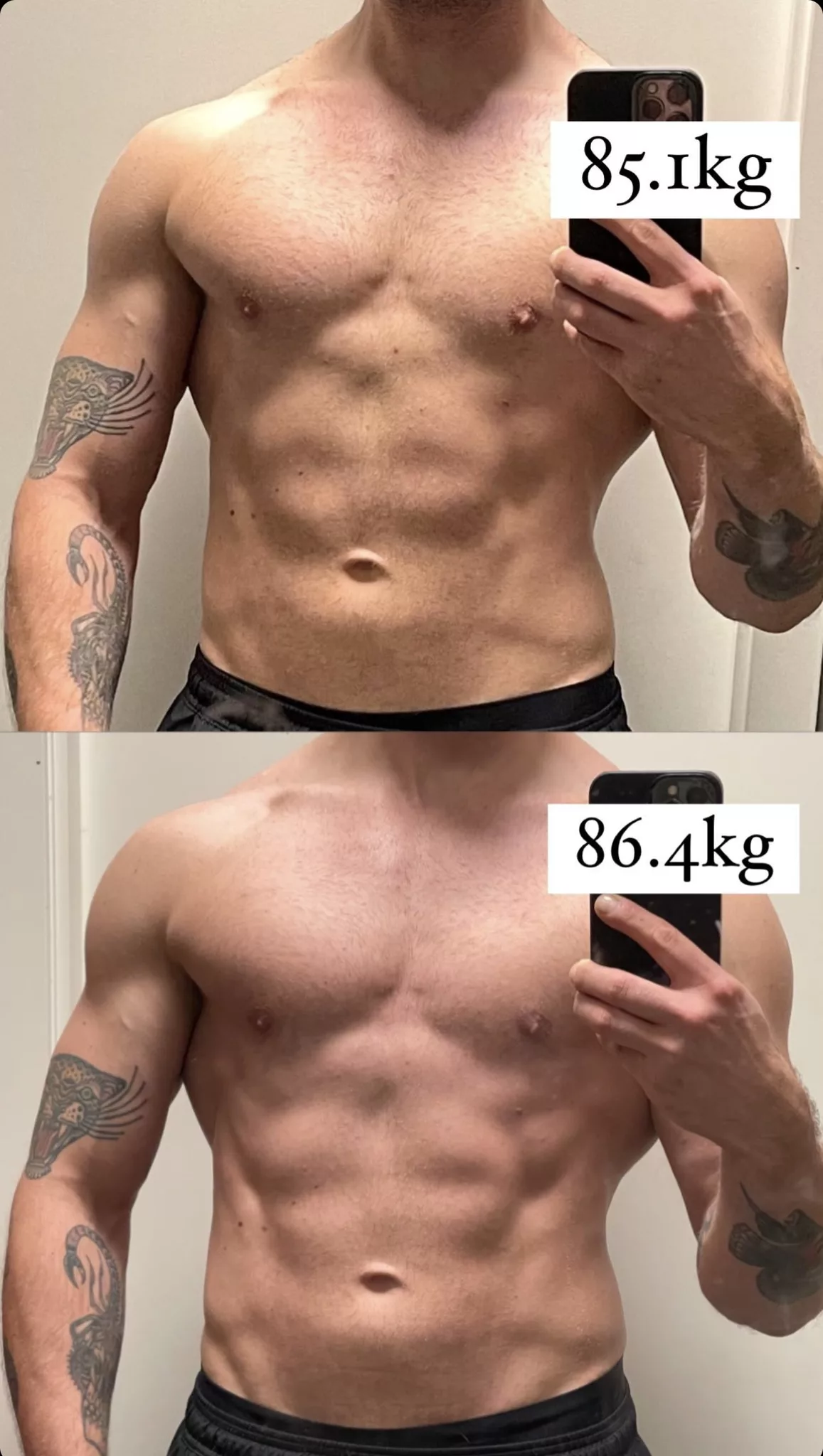
Reverse Dieting Before and After
As I’m finishing up this article, I’m feeling very satisfied with my reverse dieting results.
Below you’ll find data from my most recent check-in (yesterday to be exact), followed by why the little bit of weight gain isn’t a bad thing at all.
Monday, January 30th – Sunday, February 5th
Average weight: 86.2kg
Calories: 2825 kcal
Protein: 220g
Carbs: 340g
Fats: 65g
Adjustment: +10g carbs & 5g fats
It’s been 3 months since the end of my cut and I’m eating about 600 calories more. In the meantime I’ve kept food quality high (about 85-90% minimally processed, 5-10% flexible stuff).
Three weeks ago I hit my calculated maintenance calories. However my weight’s been stable for a month now, and I’m still continuing to add more food on a weekly basis to see how far I can bring it up. This will eventually take me into a slight surplus, where I’m planning to stay for the rest of Q3.
My weight went up a little, but you can see in my reverse dieting before and after photos that I actually look leaner in the heavier, more recent photo compared to the end of the cut.
Magic? No, because of the slow increase in calories I spent more time in a deficit.
Plus overtime my muscle glycogen stores – stored carbohydrate in your muscles and liver, aka your fuel tank – have replenished. This makes the muscles look fuller because that stored carbohydrate pulls water (about 3-4 grams of water per 1 gram of stored carbohydrate) into the muscle cells.
Last but not least, I need to mention that it IS 100% normal to gain some body fat on your way back to maintenance. This is inevitable and you shouldn’t try to avoid weight/fat gain altogether. A 1-2 kg (2-5 lbs) increase is completely normal and is to be expected.
Should you reverse-diet?
Some people gain weight while reverse dieting, others remain stable, or even lose weight. Some have a very adaptive metabolism and respond well to more calories, while others need to take it slow.
Then there’s personal preference, where you’re at in terms of your results, biofeedback, and how scary you think eating more is. All factors that influence your macronutrient adjustments.
All of which makes reverse dieting more of an art than an actual science.
So, should you reverse-diet? 
But what I can tell you is that those among our clients who get the best results, are the ones who dedicate as much time, patience, and effort to the ‘keeping-it-off’ part as the actual diet.
It’s an essential part of our proven 3-phase system that’s shown to help people like yourself lose fat and actually keep it off long term, over and over again.
Wanna learn more? Schedule a free Strategy Call with me to talk about your goals, and what this process would look like for you!


